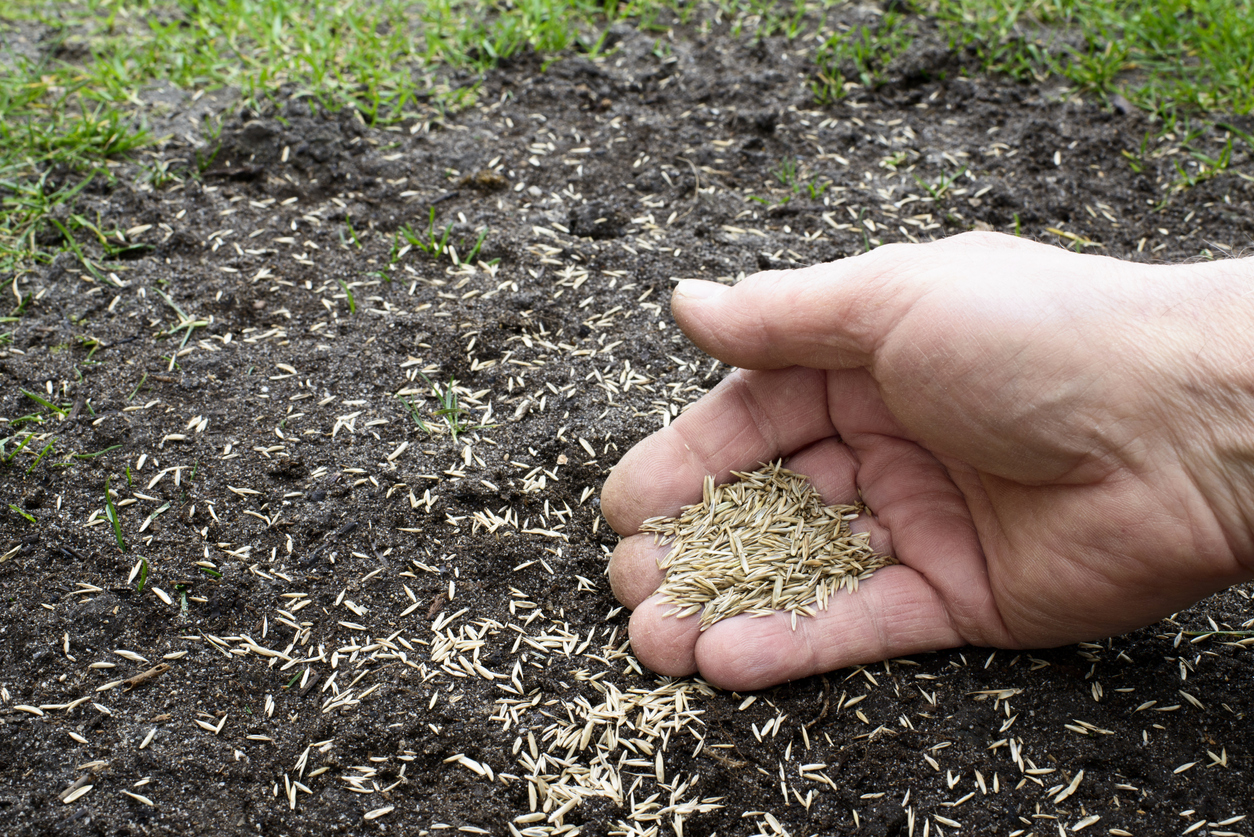Spring seeding has become a rite of passage especially with our snowy, cold New England winters. Only a few lawns will survive the entire winter without some damage resulting from snow plows, rock salt, foot traffic to the wood pile, among other woes. A bare patch here, a dead area there, it all adds up to a blemish, if not a scar on what you thought was a nice yard last fall.
Spring is not the best time to seed, mainly because any new grass has to compete for space, light, water, and nutrients with dormant crabgrass seeds and other annual weeds just biding their time until mid-to-late May. If you plant too early, the seed dries up, is eaten by ravenous birds, or just plain dies because of cold soil temperatures. Plant too late without a preventative annual weed barrier in place and the contest is already lost because annual crabgrass and other weeds will grow infinitely faster, smothering any new seedlings that may have begun sprouting. What’s a homeowner to do? I bring good news because there is hope if you must do spring seeding.
Step One
First, wait until the ground is warm enough, into the high 40’s or low 50’s at least. Depending upon your location in NH or VT, this is generally not March and certainly before June – somewhere in between lies the magic timeframe for spring seeding. Add a little topsoil blended with compost, if available, to create a suitable seeding bed. A depth of ¼ to ½” is generally sufficient.
Step Two
Apply a special product that allows for seeding while keeping the crabgrass villains and annual weeds at bay; this may require a licensed lawn care professional. The majority of products available do not, I repeat do not, allow for both growing grass and controlling crabgrass at the same time. There are only a few specialized materials available such as Tenacity, a name brand product that fits spring seeding needs perfectly.
Step Three
Select the right seed for the location such as sunny, dry, shady, play areas, and/or edges. All have their own unique qualities and demands and a one-size-fits-all seed will not get the job done correctly. I do not endorse readily made “patch mixes” or generic seed blends. Your local lawn care professional can provide the proper advice on what grass types belong where, how much seed is required and perhaps do the seeding for you. This advice can save you that long uncertain stare at shelves stacked with bags of seed options at your local hardware store.
Step Four
Keep the seed moist, not soaked, for generally 2-4 weeks depending upon the grasses utilized. Do not allow it to become dry. Results generally take 3-4 weeks; don’t expect a miracle germination in a week, it takes time.
Step Five
This last step is the insurance policy on your newly seeded lawn area. To suppress the competition, spray for any wayward crabgrass in late June or early July. Step five requires another specialized product that can be used on new grass.
If you do all five steps, the likelihood of success goes from 20% (just throwing seed onto the surface of your lawn in April) to 80%. Good luck and may your spring be filled with bright green grass.


